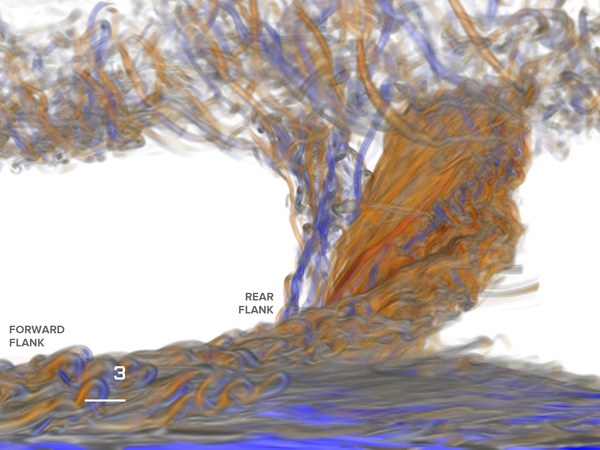
[ Archive ]

 |
CIMSS-NOAA Weekly Report [ Archive ] |
 |
ASPB AND CIMSS WEEKLY HIGHLIGHTS FOR THE WEEK ENDING NOVEMBER 3, 2017
IN THE PRESS:
SSEC and CIMSS Scientists In the News: Scientists at the University of Wisconsin-Madison Space Science and Engineering Center (SSEC) and the Cooperative Institute for Meteorological Satellite Studies (CIMSS) were featured in stories and reports, including: 1) CIMSS scientist Leigh Orf's tornado simulation research was highlighted at length in the current issue of Wired: Into the Vortex: Megacomputers and the Quest to Understand Superstorms, http://go.wisc.edu/hr1ug3; 2) An article on JPSS-1 and ongoing work at SSEC and CIMSS was picked up by various outlets: The Road to Launch: SSEC Scientists’ Efforts to Calibrate and Validate CrIS and VIIRS on JPSS-1, http://go.wisc.edu/rnc3lu; 3) A 2015 memorandum of understanding between SSEC and the EUMETSAT Radio Occultation Measurement (ROM) Satellite Application Facility (SAF) in Copenhagen, Denmark is encouraging collaboration between the two organizations. A visiting scientist report by SSEC's Michelle Feltz is evidence of joint research to bridge the gap between the IR and RO communities: Assessment of Differences Between ROM SAF GRAS Derived Brightness Temperatures and Hyperspectral Infrared Brightness Temperature Observations, http://go.wisc.edu/2ls0yy. (J. Phillips, SSEC, 608-262-8164)
 (Click image to enlarge)
(Click image to enlarge)
Figure caption: Streamwise vorticity current: This spiraling river of air flows upward from the tornado’s forward flank into the core of the storm’s updraft. The researchers believe that the low pressure helps sustain and drive the tornado. Credit: Leigh Orf.
(Click image to enlarge)
Figure caption: GOES-16 Mid-level Water Vapor (6.9 µm) image at 0022 UTC on October 30 (or 8:22 PM Eastern Time on October 29), 2017. Precipitation type symbols are plotted in red.
ITEMS FOR THE ADMINISTRATOR:
ITEMS FOR THE ASSISTANT ADMINISTRATOR:
ITEMS FOR THE OFFICE DIRECTOR, STAR:
Workshop on Transitioning Academic Research to NOAA Operations: Steve Ackerman attended the "Building a Weather-Ready Nation by Transitioning Academic Research to NOAA Operations" workshop on November 1-2, 2017, in Maryland. The workshop, organized by UCAR (University Corporation for Atmospheric Research) had these objeectives: (1) To inform the academic community about NOAA’s transition policies, (2) To promote best practices for effective transitions of research from academia and NOAA, and (3) To explain NOAA’s weather transition programs. With the goal to have "An informed academic community that actively participates in transitioning research to operations (R2O) and operations to research (O2R) to build a Weather-Ready Nation through improvements in NOAA’s weather operations." Steve gave an invited talk about the positive role NESDIS/STAR cooperative institutes play in R2O on the satellite products. (S. Ackerman, CIMSS, 608-263-3647)
ITEMS FOR THE DIVISION CHIEF, CoRP:
Satellte Images of Strong Northeast US Storm: Geostationary Operational Environmental Satellite (GOES)-16 Water Vapor images showing the development of a strong storm producing heavy rain and high winds across the Northeast United States on October 29-30, 2017 were posted on the Cooperative Institute for Meteorological Satellite Studies (CIMSS) Satellite Blog (http://cimss.ssec.wisc.edu/goes/blog/archives/25911). The high winds caused widespread tree and power line damage, resulting in power outages in many areas -- post-storm Suomi National Polar-orbiting Partnership (NPP) Visible Infrared Imaging Radiometer Suite (VIIRS) Day/Night Band images revealed some of the locations affected by power outages (http://cimss.ssec.wisc.edu/goes/blog/archives/25923). (S. Bachmeier, CIMSS, 608-263-3958, S. Lindstrom, CIMSS, 608-263-4425, W. Straka, CIMSS)
VISITORS:
NEXT WEEK:
LOOKING AHEAD:
| Archived Weeklies Page | Submit a report item |